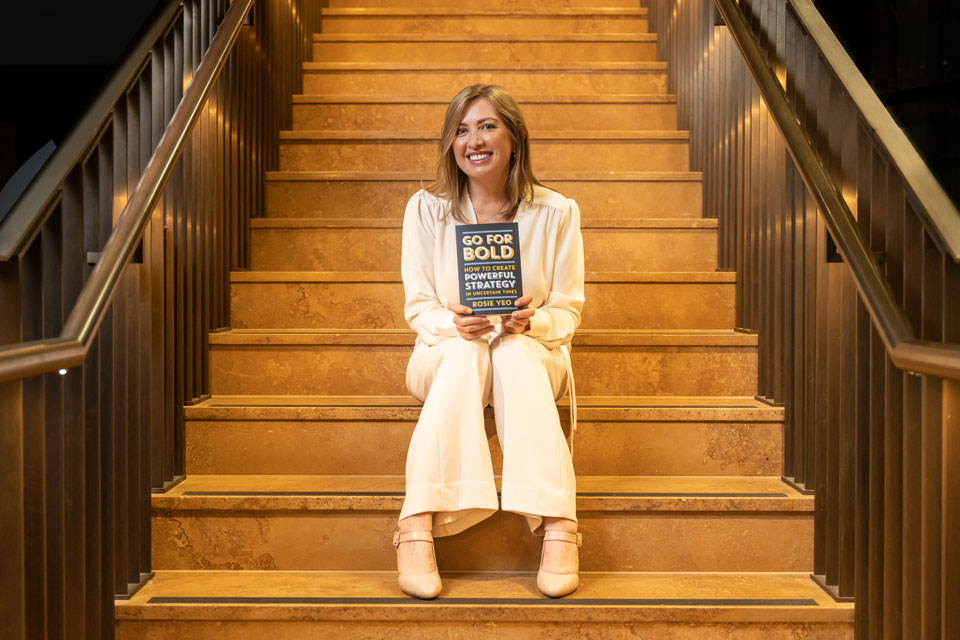Is your Board stimulating or stifling innovation?

In a fast-moving, uncertain, and highly competitive world, we need to be creative and innovative in deciding on the things we do and the way we do them. Effective Boards inspire and facilitate fresh thinking in organizations. Yet sometimes Boards act as blockers rather than enablers and are viewed by management as conservative rather than creative.
Occasionally Boards fall too far on the other end of the continuum, pushing too hard for radical shifts. This can be almost as damaging as blocking innovation if a Board is pushing the organization beyond its capabilities, and without a clear purpose beyond change for change’s sake.
Board-level barriers to effective innovation can include individual Director risk-aversion, instinctive commitment to “how we’ve always done things”, insufficient insights into changing circumstances, and the lack of a clear, shared vision for future growth.
Working with Boards and Executive teams across the corporate, non-profit and public sectors, I’ve identified three keys to unlocking constructive, innovative thinking in the Boardroom and beyond: trust; space; and a shared story.
- Trust
Innovation depends on creative thinking, and creativity needs trust. Trust is the foundation of psychological safety. Without it, people will never feel comfortable being honest or exploring new boundaries, and that’s exactly what innovation depends on. People will not be comfortable exploring new ideas if they feel like their contributions may be ignored or undervalued. As John Cleese memorably described it: ‘New ideas are rather like small creatures. They’re easily strangled.’Trust is personal. You can’t expect people to agree to big strategic leaps if they don’t trust the professional expertise and genuine intent of their leaders and co-travelers. Building genuine trust within your Board (and between Board and management) starts with honest, open discussions about your purpose, the challenges you face, your organization’s shared risk appetite, and the group’s mandate for change.
- Space
Innovation requires imagination – we need to give ourselves the time and creative space to explore new ideas and map our new paths. One of the first steps to removing blocks to innovation is to change the way we do strategy meetings.The way we design and run our strategy meetings has a huge impact on our ability to generate fresh ideas. Formal, packed agendas with no flexibility, endless PowerPoint presentations, limited discussion time, and closed rather than open-ended questions all contribute to squashing creative discussion. The more tightly you’re boxed into a framework and an agenda, the more firmly the walls are locked in around you.
With Boards and senior leadership teams, another significant constraint to creative thinking is that everyone arrives at meetings intent on proving what they know and are certain of. This means that very little space is given to acknowledging what is uncertain or not yet known.
‘Not knowing’ can be a powerful source of inspiration and innovation, because it means we’re not locked into familiar actions and pathways. Innovation is nurtured by acknowledging that we don’t have all the answers, and by allowing for the possibility of learning through failure as well as through success.
- Shared Story
The foundation for bold innovation is a clear, overarching strategy – a “shared story” about an organization’s core purpose and its future ambitions.When long-term ambitions are shared and supported by the Board and management, organizations collectively develop the confidence to take bolder decisions together.
organisation can make braver decisions because the risks can be viewed from a broader perspective. When options are seen in context over a longer timeframe, it’s easier to assess the risks and rewards.
Sometimes, people’s discomfort around options for change is based on their individual perceptions of risk, rather than measuring proposals against the organization’s agreed risk threshold. That’s why it’s important to ensure there is clarity about your shared, organizational risk appetite so that your decision-making around risk can be built from this foundation.
For many organizations, innovation, since the pandemic began, has felt more like improvisation, because our creative thinking and adapting have all focused on short-term survival. Now the challenge is, how do we translate that adaptive creativity into our long-term visioning and planning?
Boards can be powerful sources of inspiration and bold commitment to innovation over the long term. It all starts with building trust, providing creative space, and reaching a genuine consensus on shared stories.
Written by Rosie Yeo.
Have you read?
The Most Important Benefits Of Ripple.
3 Ways CEOs Can Benefit By Thinking Like Designers by Sergey Krasotin.
A New Frontier of Work-Life Flexibility by Lisa Gable.
How to Help Nonconforming Employees Turnaround Their Behavior by Kathy Kent Toney.
Bring the best of the CEOWORLD magazine's global journalism to audiences in the United States and around the world. - Add CEOWORLD magazine to your Google News feed.
Follow CEOWORLD magazine headlines on: Google News, LinkedIn, Twitter, and Facebook.
Copyright 2025 The CEOWORLD magazine. All rights reserved. This material (and any extract from it) must not be copied, redistributed or placed on any website, without CEOWORLD magazine' prior written consent. For media queries, please contact: info@ceoworld.biz








